NCERT Solutions Class 9 Science Chapter 7 - Motion
NCERT Solutions for Class 9 Science Chapter 7 – Motion are essential for understanding key Physics concepts in the CBSE curriculum. These well-structured answers help students grasp topics like distance and displacement, speed, velocity, acceleration, and graphical representation of motion. Designed as per the latest syllabus, these solutions strengthen conceptual clarity and improve exam preparation. Ideal for revision and practice, they encourage logical thinking and scientific understanding, making them a valuable study tool for scoring well in Class 9 Science exams.
NCERT Solutions Class 9 Science – Motion – Exercise Images
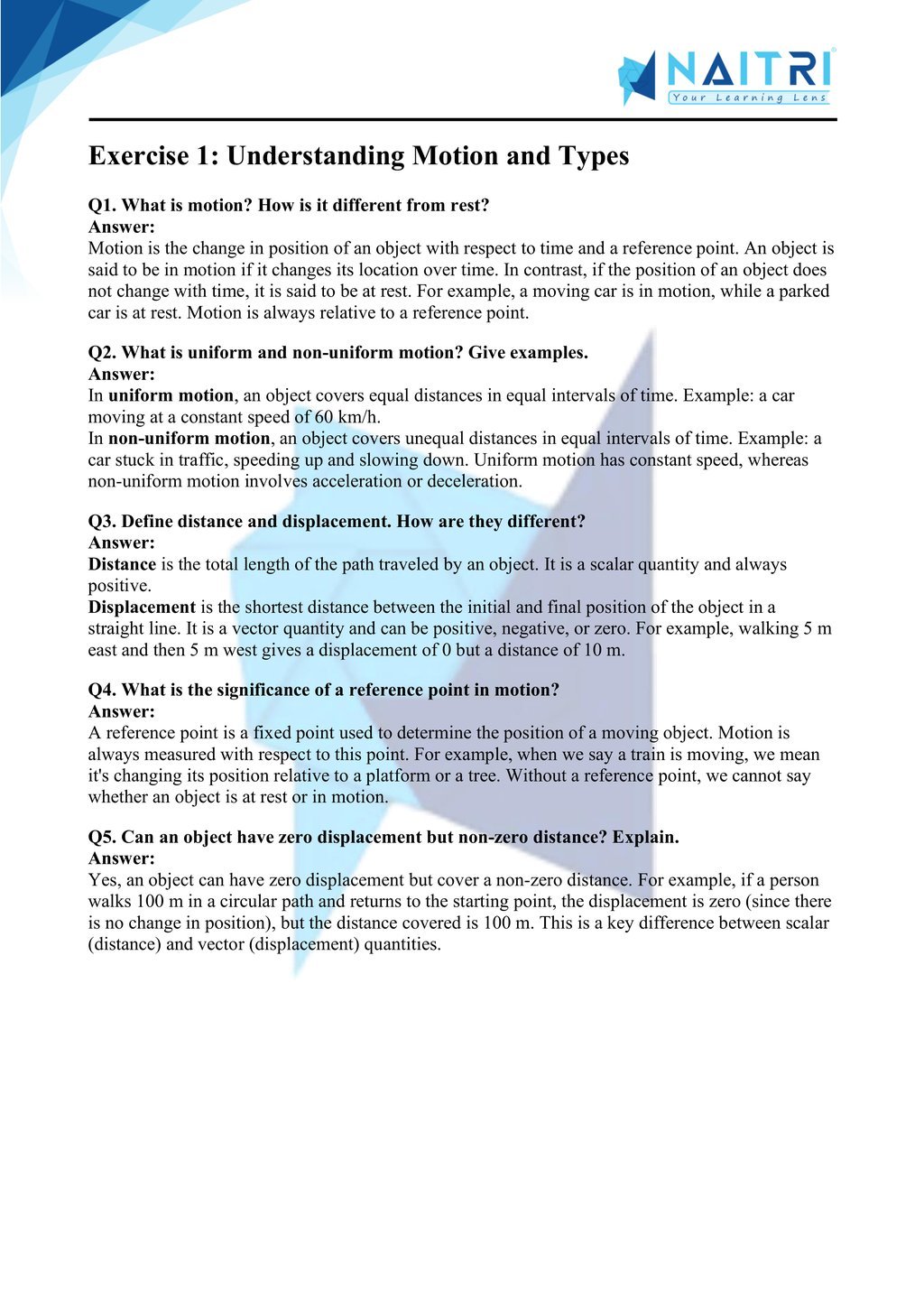
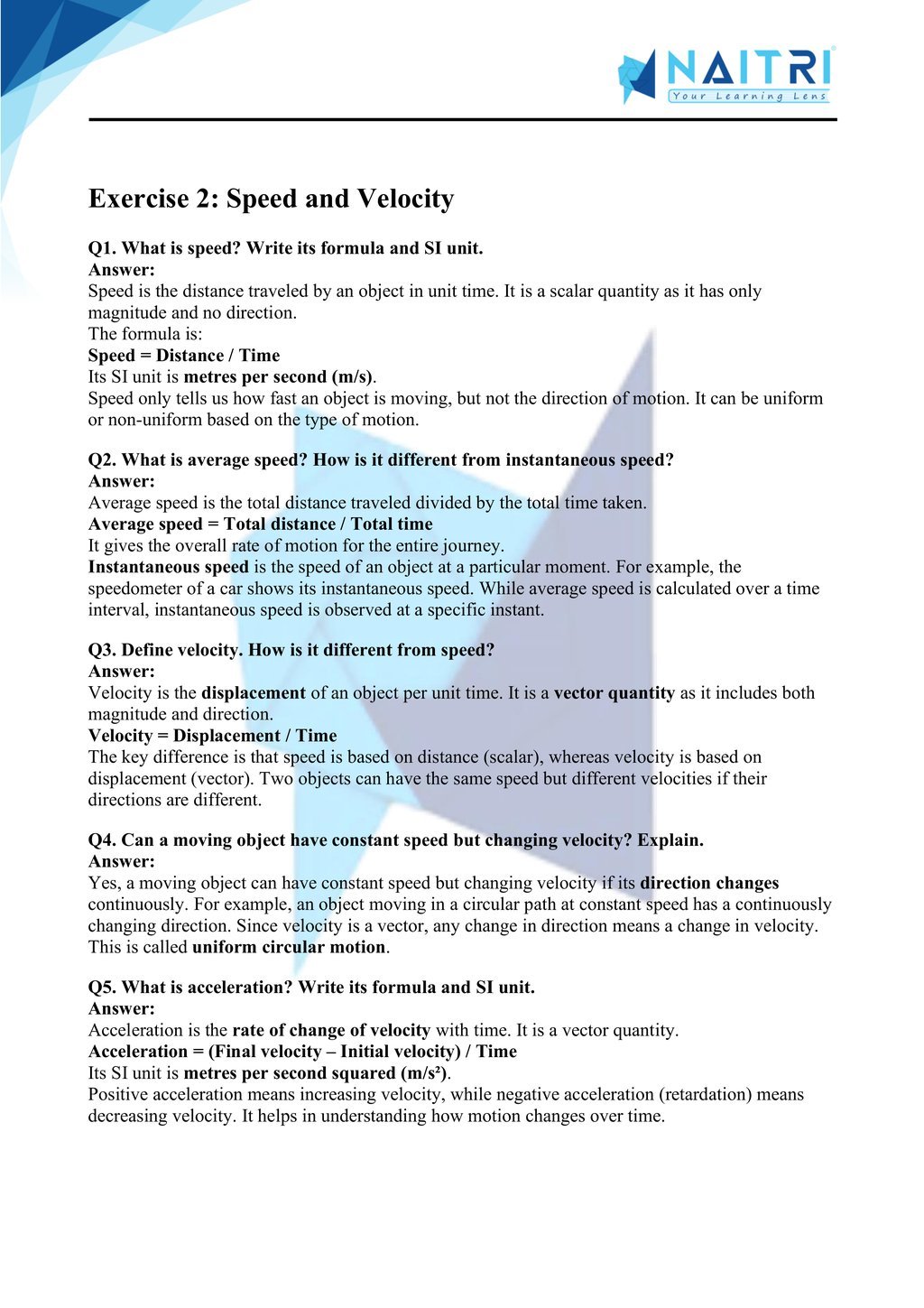
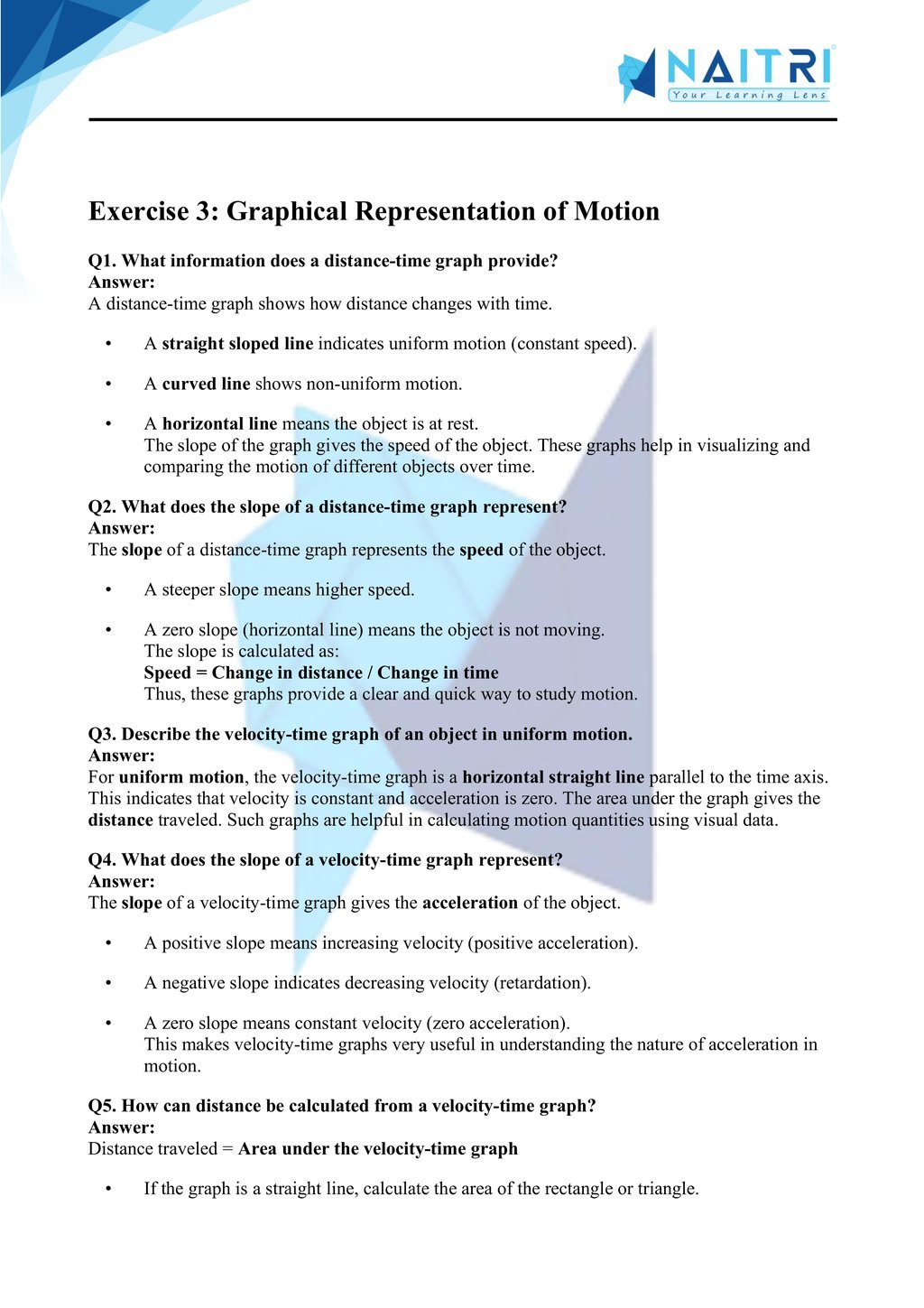
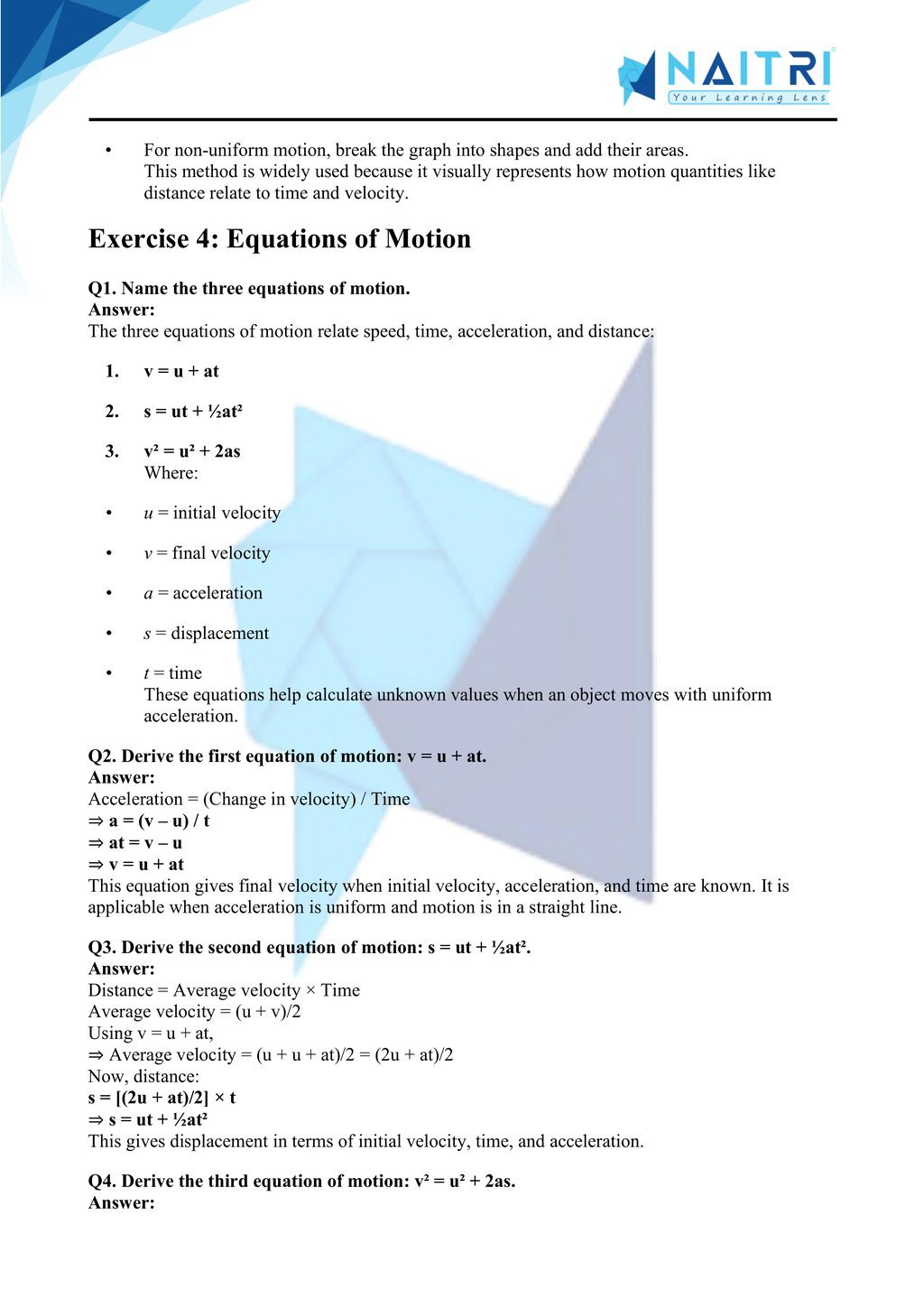
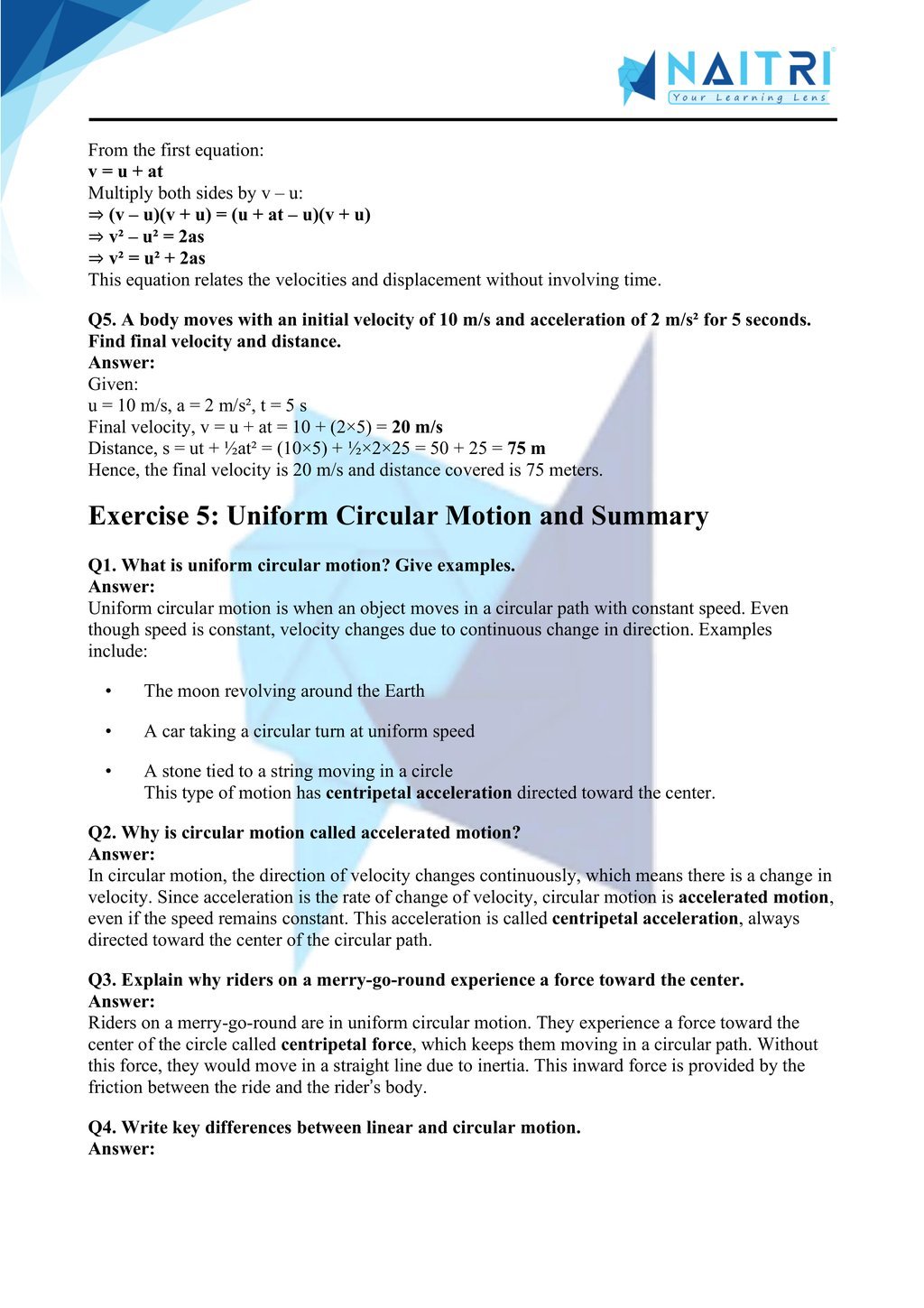
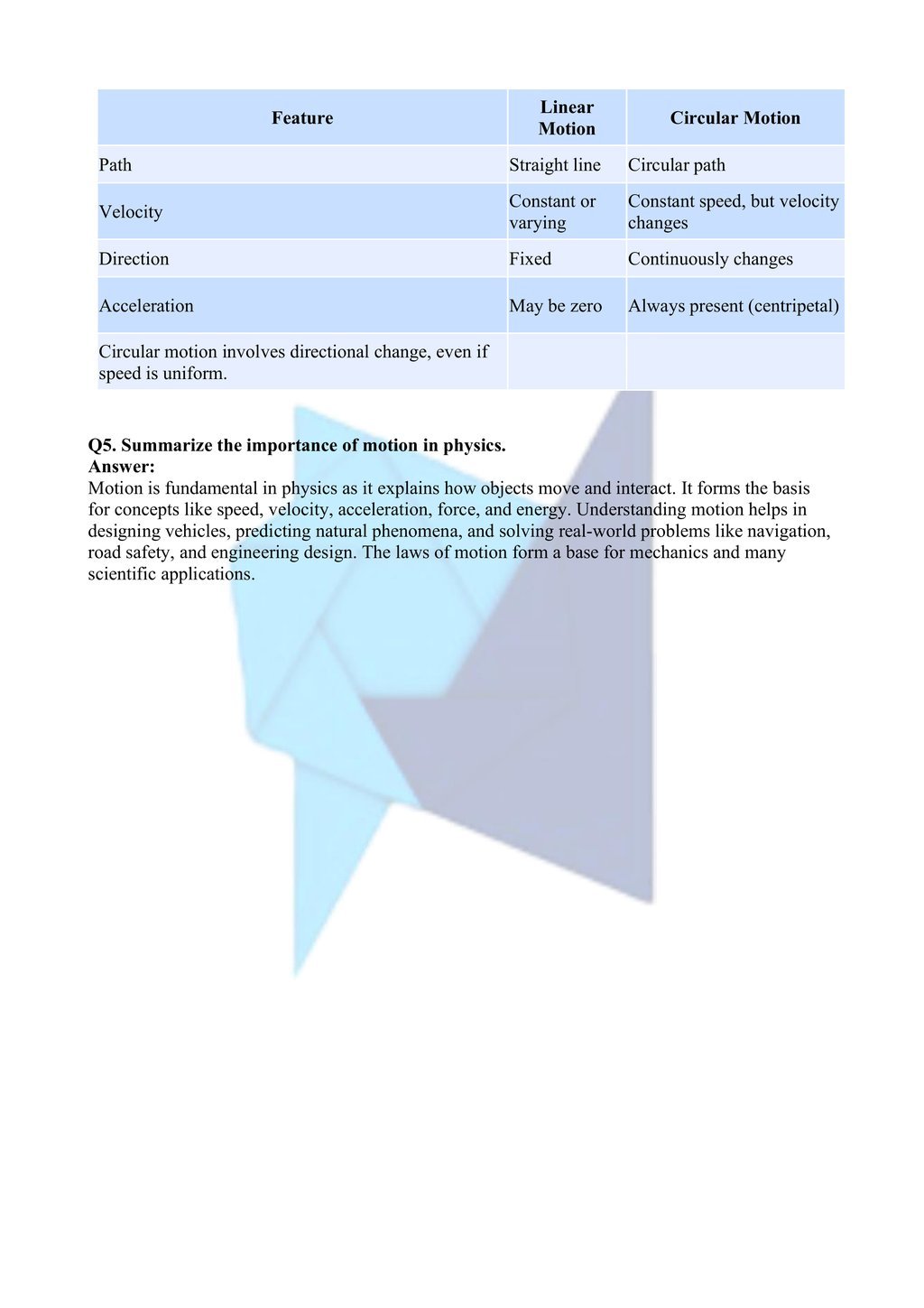
Experience Science Like Never Before – With AR!
Understanding Motion is now more exciting and immersive! With the NAITRI App, you can explore complex science concepts through Augmented Reality (AR). Visualize moving objects, speed graphs evolve, and velocity come to life — right in front of you. Our AR-powered lessons make learning interactive, 3D, and fun, helping you retain concepts better and enjoy every topic.



Visualize . Interact . Understand . The future of learning is here
Motion – Important Questions with Answers
1. What is motion?
Answer: Motion is the change in position of an object with respect to time.
2. Define distance and displacement.
Answer:
Distance is the total path covered by an object.
Displacement is the shortest straight-line distance between the initial and final positions.
3. What is the SI unit of distance and displacement?
Answer: The SI unit of both distance and displacement is metre (m).
4. What is speed?
Answer: Speed is the distance travelled per unit time.
Speed = Distance / Time
5. Define uniform and non-uniform motion.
Answer:
Uniform motion: Object covers equal distances in equal intervals of time.
Non-uniform motion: Object covers unequal distances in equal intervals of time.
6. What is velocity?
Answer: Velocity is the displacement per unit time. It is speed in a given direction.
Velocity = Displacement / Time
7. What is acceleration?
Answer: Acceleration is the rate of change of velocity.
Acceleration = (Final velocity – Initial velocity) / Time
8. What is the SI unit of acceleration?
Answer: The SI unit of acceleration is metre per second squared (m/s²).
9. What is uniform acceleration? Give an example.
Answer: Uniform acceleration is when the velocity of an object changes by equal amounts in equal intervals of time.
Example: A freely falling object.
10. A car increases its speed from 20 m/s to 50 m/s in 10 seconds. Find its acceleration.
Answer:
Acceleration = (50 – 20) / 10 = 30 / 10 = 3 m/s²
11. Name the three equations of motion.
Answer:
v = u + at
s = ut + ½at²
v² = u² + 2as
Where:
v = final velocity,
u = initial velocity,
a = acceleration,
s = displacement,
t = time
12. What type of graph is obtained by uniform motion?
Answer: A straight line graph between distance and time.
13. What does the slope of a distance-time graph represent?
Answer: The slope of a distance-time graph represents speed.
14. What does the area under a velocity-time graph represent?
Answer: The area under a velocity-time graph represents displacement.
15. A bus starts from rest and moves with an acceleration of 2 m/s². Find the velocity after 5 seconds.
Answer:
Using v = u + at
v = 0 + 2 × 5 = 10 m/s
16. What is the displacement of the above bus in 5 seconds?
Answer:
Using s = ut + ½at²
s = 0 + ½ × 2 × 5² = 25 m
17. What is retardation?
Answer: Retardation is negative acceleration, i.e., decrease in velocity with time.
18. When is an object said to be at rest?
Answer: An object is at rest when it does not change its position with respect to time.
19. Can the displacement be zero even if the distance is not? Give an example.
Answer: Yes, for example, when a person walks around a circular track and comes back to the starting point, displacement is zero but distance is not.
20. An object moves with a uniform velocity of 10 m/s for 15 seconds. What is the distance travelled?
Answer:
Distance = Speed × Time = 10 × 15 = 150 m
21. Define average speed.
Answer: Average speed = Total distance / Total time taken
22. Define instantaneous speed.
Answer: Instantaneous speed is the speed of an object at a particular instant of time.
23. Is speed a scalar or vector quantity?
Answer: Speed is a scalar quantity.
24. Is velocity a scalar or vector quantity?
Answer: Velocity is a vector quantity because it has both magnitude and direction.
25. What kind of motion does a free-falling object exhibit?
Answer: Uniformly accelerated motion.
Motion introduces the basic concepts of physics by explaining how and why objects move. It covers types of motion, displacement, velocity, acceleration, and graphical representation of motion. The chapter helps students understand how to calculate motion parameters and introduces equations of motion. This forms the groundwork for understanding forces, energy, and real-world mechanics in later chapters.
Related Chapters You May Like
- Chapter – 1 Matter in Our Surroundings
- Chapter – 2 Is Matter Around Us Pure
- Chapter – 3 Atoms and Molecules
- Chapter – 4 Structure of the Atom
- Chapter – 5 The Fundamental Unit of Life
- Chapter – 6 Tissues
- Chapter – 8 Force and Laws of Motion
- Chapter – 9 Gravitation
- Chapter – 10 Work and Energy
- Chapter – 11 Sound
- Chapter – 12 Improvement in Food Resources
Download Naitri App
Easy, Visual Learning — Right on Your Phone
Learn with Augmented Reality! The Naitri app makes CBSE and MP Board concepts interactive and fun — even in low-resource settings. Watch lessons, complete homework, take tests, and track progress — all in one place. Anytime. Anywhere.
Available on








